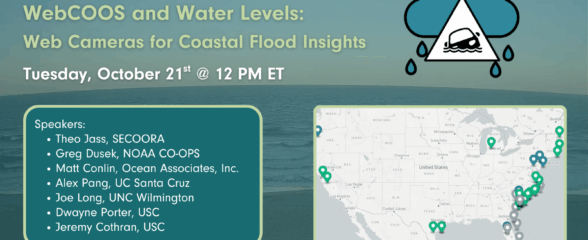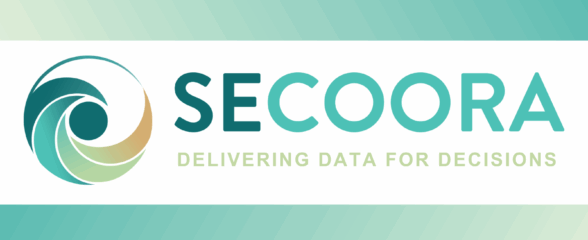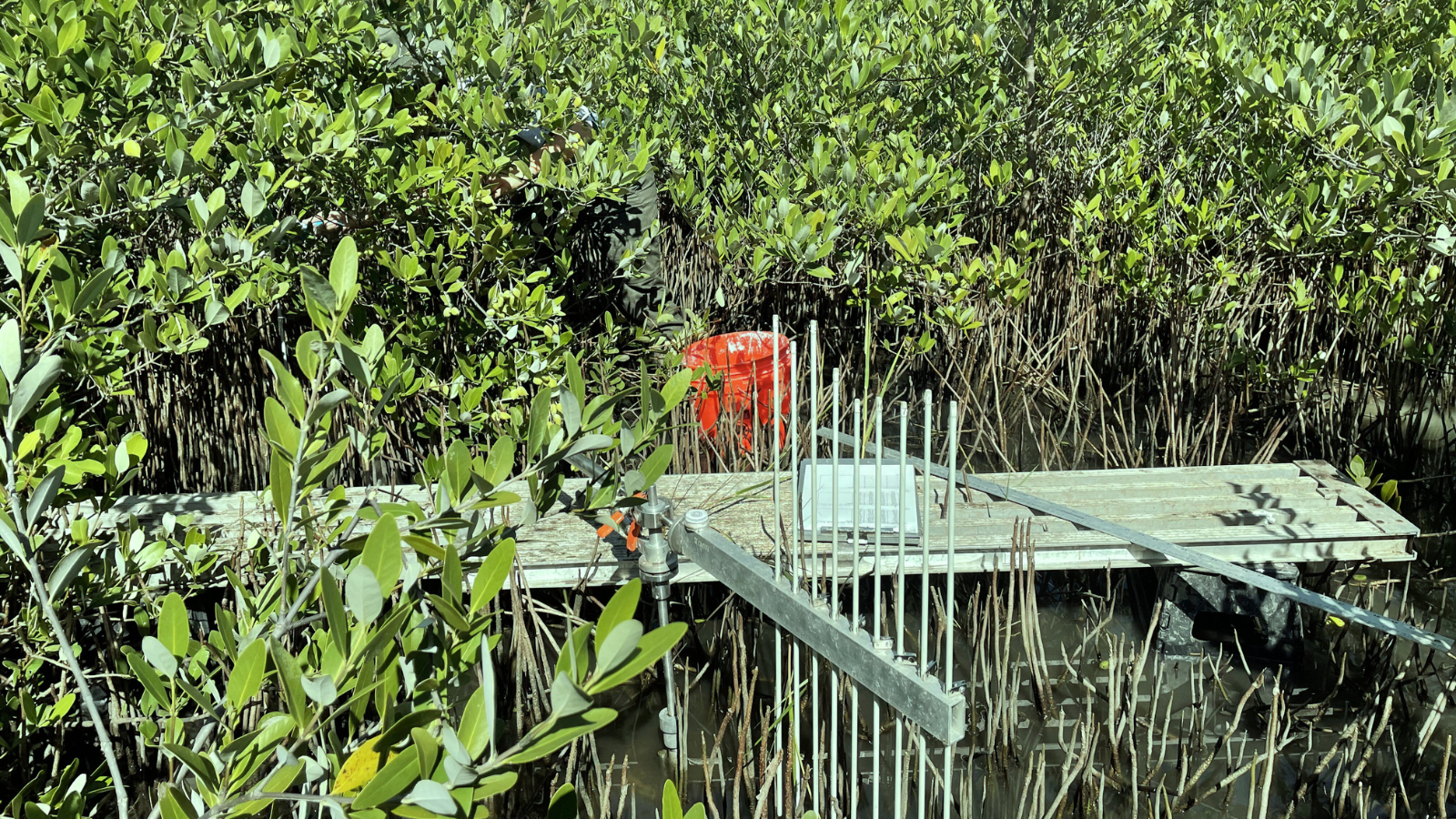The SECOORA Surface Elevation Table (SET) Workshop was virtual on July 17, 2025. More than 50 Community of Practice members and stakeholders joined this collaborative workshop to discuss SET monitoring, coastal resilience, and data driven decision making in the Southeast.
This workshop brought together attendees to:
- Facilitate discussions between stakeholders and SET practitioners on improving accessibility to SET data.
- Provide a platform for SET practitioners to explore key topics, including SET gap analysis, metadata requirements for the data visualization platform, and data analysis, processes, storage, and formatting.
- Celebrate the SECOORA SET Awardees and learn more about their projects.
Workshop Overview
The workshop kicked off with a welcome from Dr. Nisse Goldberg from Jacksonville University, who is the SET Community of Practice Coordinator. Debra Hernandez, SECOORA Executive Director, explained SECOORA’s involvement in the CoP along with the funding landscape.
Attendees heard updates from the awardees of the SET Request for Proposals, a competition held by SECOORA last spring to support the installation of new SET stations or reactivation of historic stations in the Southeast.
- Dr. Scott Curtis, professor at The Citadel, presented on the new SETs installed at The Citadel in Charleston that will provide new data and educational opportunities.
- Dr. Beth Darrow, Estuarine Ecologist and Director of Science at Bald Head Island Conservancy, presented on the SETs in the Lower Cape Fear River, NC that combine a blend of data on sea level rise, water quality, and vegetation.
- Dr. Will Doar and Dr. Katie Luciano, geologists at South Carolina Geological Survey, presented on their established SETs located throughout South Carolina along with how the new SETs will fill data gaps.
- Chris Kehrer, Port Royal Sound Foundation, presented on the new SETs for the Port Royal Sound that will fill a data gap in this unique estuarine system.
Riley Breshears, SET Student Coordinator, provided a demonstration of the new SECOORA SET Data Visualization Tool. This tool allows for quick, easy to understand visuals of SET stations and the trends associated with them. This is supported by the addition of more data layers and basemaps, time and depth sliders, and a compare mode to further understand SET trends and their relationship to other variables.
Laura Feher, biologist and data manager at the Northeast Coastal and Barrier Inventory & Monitoring Network within the National Park Service, presented on the Evolution of the SET Data Lifecycle and Strategies for Integrating Research into Natural Resource Management. Laura’s talk also covered common SET data issues and how to mitigate them. She provided links to SET protocols, templates for data collection, analysis, storage, and communication and recommendations for integrating SET research into natural resource management (see Workshop Resources below).
After lunch, attendees were sorted into breakout rooms to discuss the needs of coastal stakeholders and data visualization platform functionality and uses in a session led by Bailee Porter, SET Student Coordinator. Topics included how to make SET data more accessible, how SET data is used and by whom, and how stakeholders can benefit from SET data. The key takeaways from this session include:
- Integration with Other Tools and Metrics: There is a strong desire to integrate SET data with other environmental indicators (e.g., vegetation, UVR) and existing tools like NOAA’s sea-level rise viewer to create more powerful, multi-layered decision-support systems.
- Expanded Use Cases and Relevance: SET data could play a greater role in land use planning, restoration prioritization, sediment management, and grant applications. However, its potential is often unrealized due to limited awareness and unclear use pathways.
- Improved Accessibility and Centralization: Many participants noted that SET data is difficult to find and often shared informally. A centralized, and well-advertised platform with clear contact information and data access would significantly improve usability.
- Contextual Understanding and Communication: Many emphasized the importance of conveying general trends, variability, and storm history in ways that are understandable to both scientists and non-scientists. Visual tools, such as localized maps or dashboards, could help illustrate relationships between elevation change, vegetation, and sea-level rise.
- Technical Barriers and Data Formats: Several groups mentioned that file types, formatting inconsistencies, and limited data documentation hinder data analysis. Streamlined, standardized formats would make analysis more approachable, especially for local governments and practitioners.
The workshop wrapped up with a session on data and metadata, led by Katie Luciano and Will Doar III, who are SET practitioners with the South Carolina Department of Natural Resources. Attendees discussed information to be included in the SECOORA SET station metadata summaries such as sampling intervals, equipment used, installation date, and type of vegetation. Other data that could be measured and included were total suspended solids and salinity. The importance of documenting qualitative notes was widely acknowledged, including whether an alligator trampled through a station.
Workshop Resources
Recordings from each session of the workshop can be found on SECOORA’s YouTube Channel. Click here to view the SET Workshop playlist. Additional resources can be found on the SET Community of Practice Resource Hub.
Presentations, Documents, and Other Resources
- Presentation on the Evolution of the SET Data Lifecycle and Strategies for Integrating Research into Natural Resource Management – Laura Feher
- Sample SET and Marker Data Spreadsheet – Ches Vervaeke
- National Park Service SET-MH Protocol
- National Park Service Implementation Plan for the Southeast Coast Network
- National Park Service Implementation Plan for the South Florida & Caribbean Network
- National Park Service SET SOP 2.3.06 (Data Entry)
- National Park Service SET SOP 2.3.05 (Data QAQX & Publication)
- National Park Service SET meta data templates
- SET R Resources
Please contact Nisse Goldberg (ngoldbe@ju.edu) with questions regarding the SET Workshop, or if you are interested in joining the Community of Practice.
Related news

SECOORA Webinar | WebCOOS and Water Levels: Web Cameras for Coastal Flood Insights
On October 21st at 12 PM ET, SECOORA is hosting a webinar with investigators from the Webcam Coastal Observation System (WebCOOS) project team and the WebCOOS Project Manager. Web cameras are a low-cost technology that can be used to document flooding impacts to coastal communities. Register here.

SECOORA Funding Opportunity Announcement: Letters of Intent Solicitation
SECOORA will submit a coordinated regional proposal in response to the anticipated FY 2026 Implementation of the U.S. Integrated Ocean Observing System (IOOS) funding opportunity. Letters of Intent to be considered for inclusion in SECOORA’s full proposal are due September 9, 2025.

SECOORA Hosts the First Surface Elevation Table (SET) Community of Practice Virtual Workshop
The SECOORA SET Workshop was virtual on July 17, 2025. More than 50 Community of Practice members and stakeholders joined this collaborative workshop to discuss SET monitoring, coastal resilience, and data-driven decision making in the Southeast.
